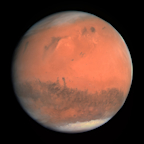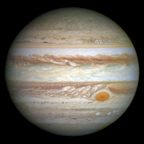Search results
Dark, cold and whipped by supersonic winds, giant Neptune is the eighth and most distant major planet orbiting our Sun. More than 30 times as far from the Sun as Earth, Neptune is not visible to the naked eye. In 2011, Neptune completed its first 165-year orbit since its discovery.
Dark, cold and whipped by supersonic winds, ice giant Neptune is the eighth and most distant planet in our solar system. Neptune is the only planet in our solar system not visible to the naked eye.
Dark, cold, and whipped by supersonic winds, ice giant Neptune is the eighth and most distant planet in our solar system. More than 30 times as far from the Sun as Earth, Neptune is the only planet in our solar system not visible to the naked eye.
6 days ago · Neptune, third most massive planet in the solar system and the eighth and outermost planet from the Sun. Neptune has 14 moons, only two of which were discovered before Voyager 2’s visit in 1989, and a system of rings, which were unconfirmed before Voyager.
NEPTUNE is the world's first regional-scale underwater ocean observatory that plugs directly into the Internet. NEPTUNE is the largest installation on the Ocean Networks Canada network of ocean observatories.
May 6, 2024 · Neptune is dark, cold, and very windy. It's the last of the planets in our solar system. It's more than 30 times as far from the sun as Earth is. Neptune is very similar to Uranus. It's made of a thick fog of water, ammonia, and methane over an Earth-sized solid center.
Neptune is the fourth largest planet in the Solar System and the third most massive. Neptune is 17 times the mass of Earth, but just 1 ⁄ 18 the mass of Jupiter. Neptune is a little bit more massive than Uranus, though Neptune is denser and smaller in size than Uranus.



















